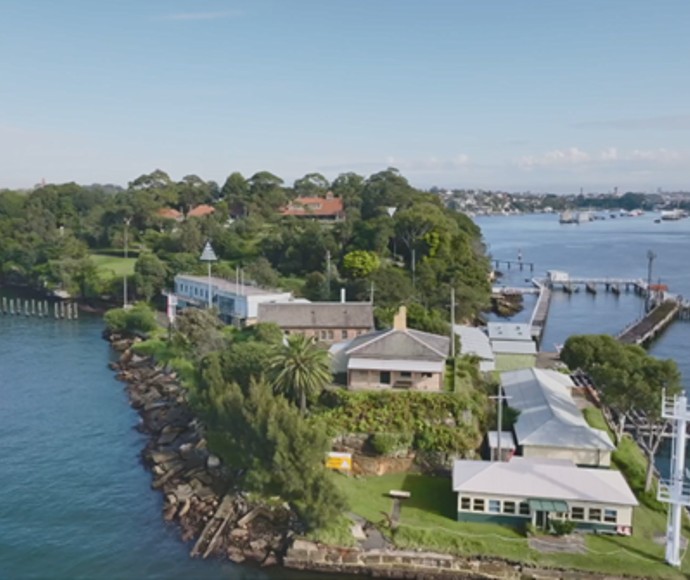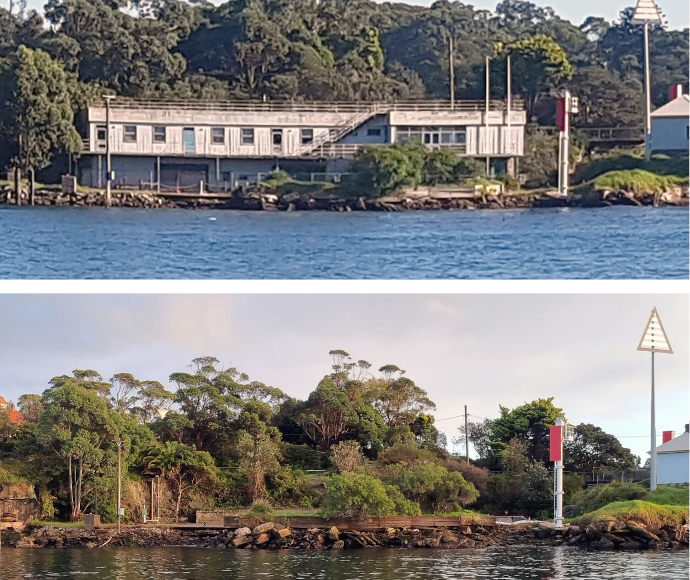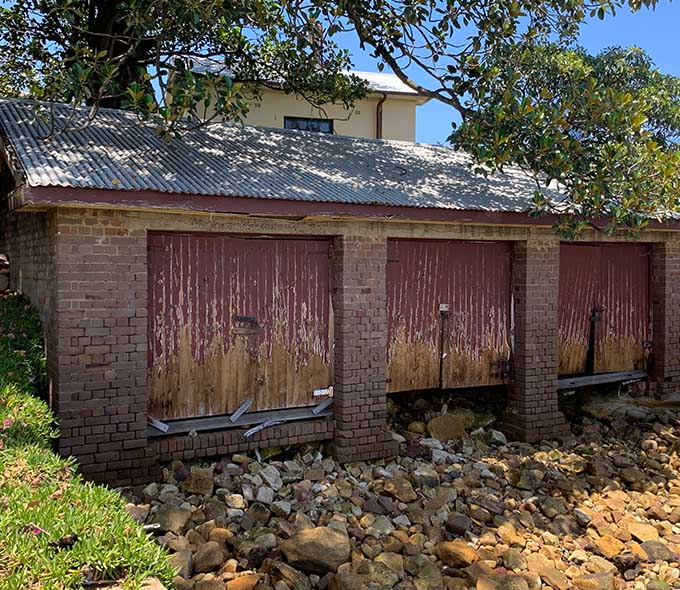Me-Mel Goat Island is of exceptional heritage significance and is deeply connected to Sydney's history.
Early colonial records indicate in the 18th century, the island was associated with Bennelong; in the 19th century it was associated with Australia's convict and military history and in the 20th century the island was a key part of Sydney Harbour's maritime operations. These phases of history are reflected in the natural and built environment of the island.

Remediation and conservation program
The NSW Government has committed $42.9 million for remediation, conservation, and upgrade works at Me-Mel to support the island's transfer to Aboriginal ownership, governance and management.
Progress of remediation
NSW National Parks and Wildlife Service has completed the following repair and remediation works to date:
- demolition of the condemned and dilapidated timber ferry wharf
- repair of the small boat pens
- removal of the former Port Emergency Services amenities building
- replacement of damaged slate tiles on the barracks, powder magazine and cooperage
- desalination and re-limewashing of the internal powder magazine walls
- installation of smoke detectors in buildings across the island.
Over the next 12 months the National Parks and Wildlife Service will:
- repair the boatshed
- replace the bridge over The Cut (there will be no visitor access past the bridge for 3 to 4 months)
- carry out sandstone conservation works to the sentry wall
- replace and extend the northern broadside wharf and repair the seawalls
- remove a small redundant amenities building
- remediate contaminated soil in the South Depot and North Depot precincts
- repair the Water Police Building, 1865 Cottage and 1912 Barracks.
Old ferry wharf
The old timber ferry wharf was unsafe and could not be used or economically repaired. Marine biologists inspected the ferry wharf piles and determined that no significant marine species would be affected by the removal of the wharf piles.

Port Emergency Services building
The former Port Emergency Services amenities building, of moderate heritage significance, was dilapidated, unsafe and unable to be used. The original construction utilised lightweight, economical materials which were in poor condition. Alterations made to the building in the 1990s were intrusive and non-durable, and the stairs and balustrades did not comply with current safety or engineering standards.

The building obscured visual appreciation of the north-eastern shoreline including 'The Cut' – a channel carved through the island by convicts to separate the Water Police Building from the main island.
The Heritage Council of NSW approved the removal of the building, and the process has been completed now. Areas of contaminated soil around the building will now be remediated.

Barneys Cut Bridge
In 1835, the colonial government requested approval to establish a water police station on Goat Island, as this was a strategic location for responding to escaped convicts and smuggling. Ordnance engineer George Barney deployed a convict iron gang to excavate a channel to separate the main island from the water police station on the north-eastern tip. The superior quality stone extracted from this process was used to construct the water police station.
When the water police relocated from Goat Island in 1865, a bridge was built over the channel and has been replaced several times.
The steel beams have extensive corrosion, the abutments have been damaged by tree roots and the bridge balustrades do not meet current safety standards. The bridge will be replaced.

Boat Shed repairs
Constructed in 1943, the Goat Island boat shed has long been an integral part of the island's infrastructure. Serving various purposes over the decades, including its current role in housing sewerage overflow tanks, the boat shed is located on the southwestern edge of the island and has endured significant exposure to the harsh marine environment of Sydney Harbour.
The foundation of the boat shed, particularly on its seaward side, has suffered from wave action and tidal forces, leading to erosion and structural instability. The roof and masonry, too, have deteriorated over time. The repair works will address these issues comprehensively. The asbestos eaves will be safely removed, the concrete lintel beams will be repaired or replaced, and the brick piers will be strengthened to withstand future environmental challenges.

Managing the island's heritage
All repair and remediation works are subject to assessments of impact and supported by the Goat Island conservation management plan.
All works on the island not covered by standard or site-specific exemptions require approval under the Heritage Act 1977.

